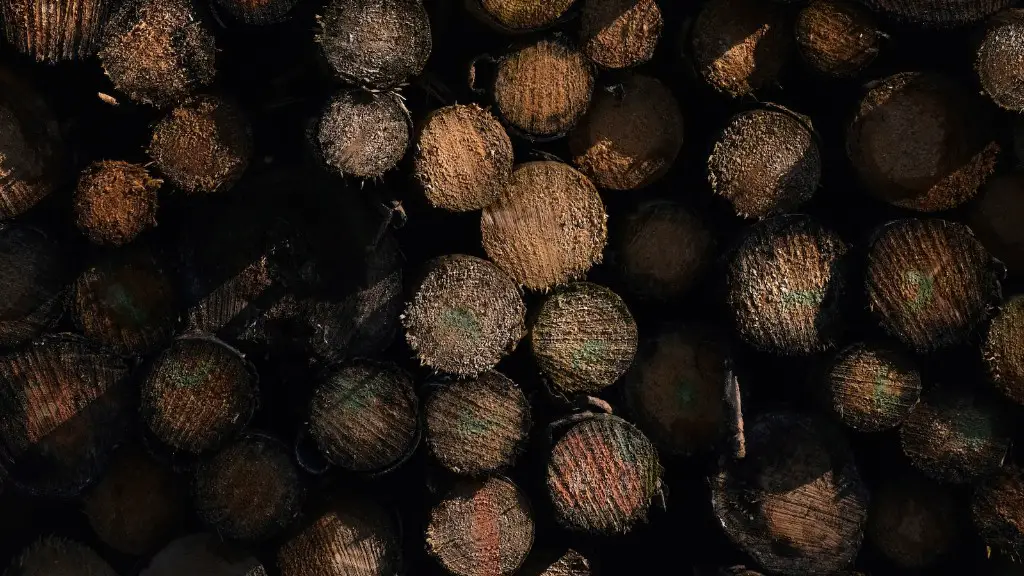Section 1 – Overview of Avocado Fruit
Avocado fruit is one of the most sought-after fruits for health conscious individuals, as it contains many essential vitamins and minerals. Not only is it known for its creamy texture and flavor, but it also has innumerable benefits that make it popular among people from all walks of life. It is a popular choice for salads, sandwiches, desserts, and spreads.
Avocados are part of the “superfood” family, as they provide an important source of healthy fats and minerals. They contain Vitamin A, Vitamin C, Vitamin E, and Vitamin K. In addition, avocados are known to reduce cholesterol levels, boost energy levels and help with weight management. They are an incredibly versatile fruit, with a variety of applications and recipes that can be made with them.
One of the most rewarding aspects of owning an avocado tree is being able to reap the rewards of harvesting fresh and delicious fruit. If you’re just starting out and don’t know where to begin, here’s a comprehensive guide on how to get avocado fruit on tree.
Section 2 – How to Plant an Avocado Tree
The very first step in getting avocado fruit on tree is planting the tree. Planting an avocado tree is fairly straightforward, if the right steps are taken. To start, you’ll need to purchase a young, already-growing avocado tree. Local nurseries and nurseries online, such as Amazon and Etsy, are some of the common sources for these trees. As you purchase, make sure that the tree is appropriate for the climate and growing conditions in your area.
Once you have the tree, you can begin the planting process. First, select a location for your avocado tree that receives plenty of sunlight, and has well-drained soil. Then, dig a hole that’s about double the size of the tree’s rootball. When you place the tree in the hole, make sure the roots are spread and the uppermost root is at ground level. Finally, fill the hole with soil and gently press it down around the tree. Water your newly planted tree and fertilize the ground around it, and you’re done!
Section 3 – Best Growing Conditions
Maintaining the best growing conditions is essential in getting avocado fruit on tree. Avocado trees thrive in sunny, warm locations, as they require plenty of sunlight and heat to bear fruit. The ideal temperature range is between 60 and 85 degrees Fahrenheit, while the ideal soil pH should be between 6.5 and 7.5. The tree needs plenty of well-draining soil, and some mulch should be applied to keep it moist.
In order to ensure healthy and fruitful growth, you need to water your tree regularly, but also be aware of over-watering, which can cause root rot. It’s best to water your avocado tree about two or three times a week, and use a layer of mulch to keep the moisture in the soil. Additionally, it’s important to prune your tree during the growing season to encourage healthy and strong branches so that it can bear more fruit.
Section 4 – Harvesting Avocado Fruit
Once your avocado tree has been planted and you’ve taken the necessary steps to ensure its proper growth and health, it’s time to think about harvesting the fruit. It’s important to note that depending on the growth of your tree, it might take several years before the tree is bear fruition, so you should be patient and not expect too much too soon.
When your tree produces fruit, it’s important to be aware of the ripening stages of the fruit in order to harvest it at the most ideal time. Avocado fruit can be harvested in a range of stages from hard and green to soft and ripe. To test for ripeness, gently press your finger onto the skin of the fruit—if it yields to the touch, it’s likely ripe enough to pick. Once the fruit has been harvested, it can be consumed fresh or kept in the refrigerator for later consumption.
Section 5 – Selecting Early and Late Season Varieties
It’s also important to consider the type of avocado variety that you would like to grow. There are different varieties of trees that are suited to both early and late season harvest, with each variety having unique characteristics. For example, some varieties are better suited for tropical climates, while others are hardy in cooler climates.
If you’re looking for a variety that yields earlier, consider the “Bacon” variety, which has a longer blooming season and yields a crop of smooth, uniform fruits in late winter or early spring. Other varieties include the “Hass”, which yields its crop from mid-summer to late fall, and the “Choquette”, which is resistant to cold and can produce a crop of fruits between winter and early spring.
Section 6 – Common Diseases and Pests
When cultivating avocado fruit on tree, it’s important to be aware of common diseases and pests that can put your tree’s growth and health at risk. Fungal and bacterial diseases can affect your tree’s root systems and leaves, so it’s important to take proactive measures to keep your tree healthy and disease-free.
Common diseases, such as anthracnose, root rot, and Phytophthora crown rot, can cause wilting and discoloration on leaves, as well as stunted growth and poor yield in fruit-bearing trees. In addition, various insects, such as mites and thrips, can prey on your tree and inhibit its growth. If you’re noticing any signs of infestation or disease, it’s best to consult a professional arborist, as they will be able to provide the best solutions to address the problem.
Section 7 – Appropriate Fertilizers
The choice of fertilizer has a great impact on the growth and health of your avocado tree. When selecting fertilizer for your tree, it’s important to choose one that is specifically formulated for avocados. Most fertilizers intended for avocado trees will include a blend of nitrogen, phosphorus, and potassium, as well as trace minerals like iron, zinc, and manganese.
It’s important to use fertilizer carefully, and not to over-fertilize, as this can lead to too much nitrogen in the soil, which can lead to growth spurts and poor fruit production. Additionally, use organic fertilizers, such as compost and compost tea, to supplement your fertilizer regimen to naturally boost the tree’s growth.
Section 8 – Protecting Your Tree From Wind and Cold
Another important step in cultivating avocado fruit on tree is protecting it from strong winds and cold climates. Avocado trees are sensitive to strong winds and cold temperatures, so it’s important to install windbreaks around your tree and provide shelter from severe winters. Windbreaks can be constructed with lattice or wooden posts, and can be used to protect your tree from strong gusts of wind. Additionally, you can also cover your tree with a sheet during winter months or apply mulch or sphagnum moss to protect the roots from cold temperatures.
Finally, it’s crucial to monitor your tree for any signs of stress or damage. If you notice any weak or dead branches, be sure to prune them away to ensure that your tree can stay healthy and bear more fruit.

